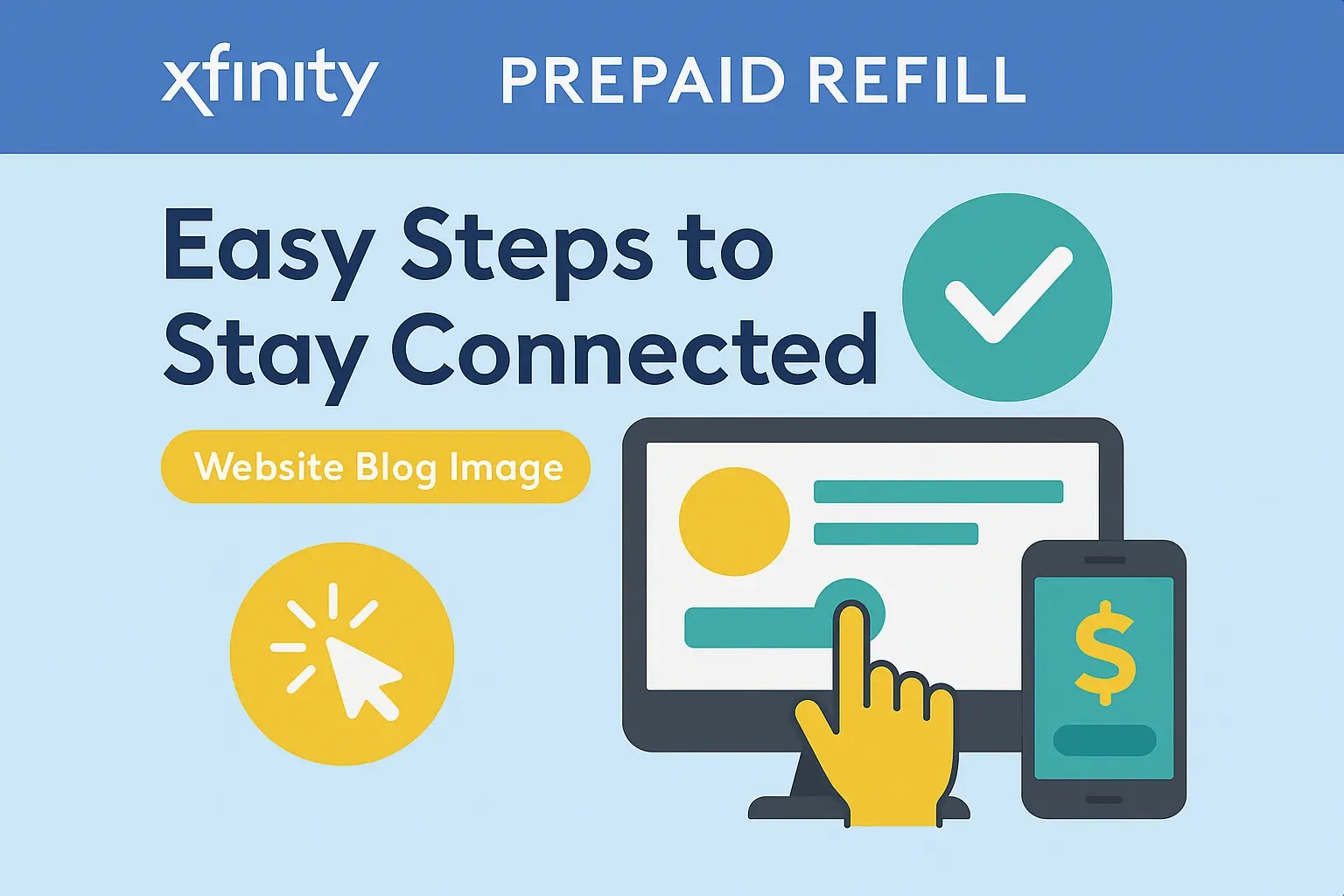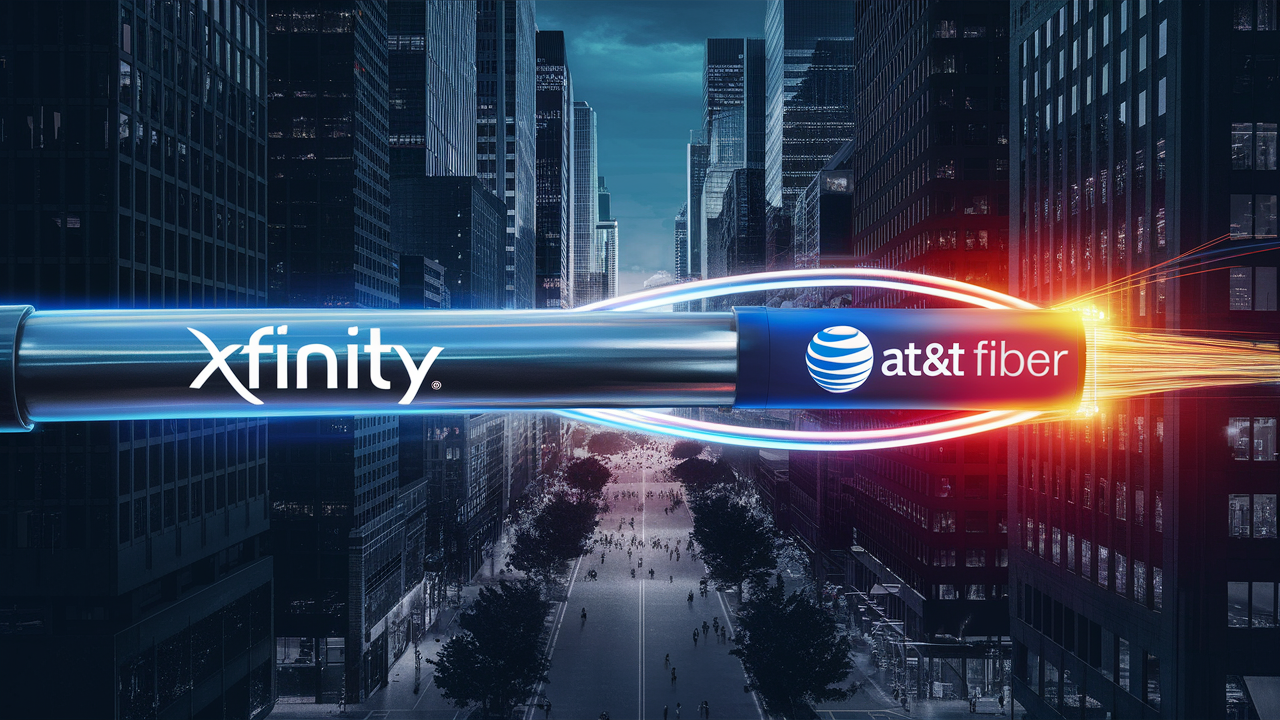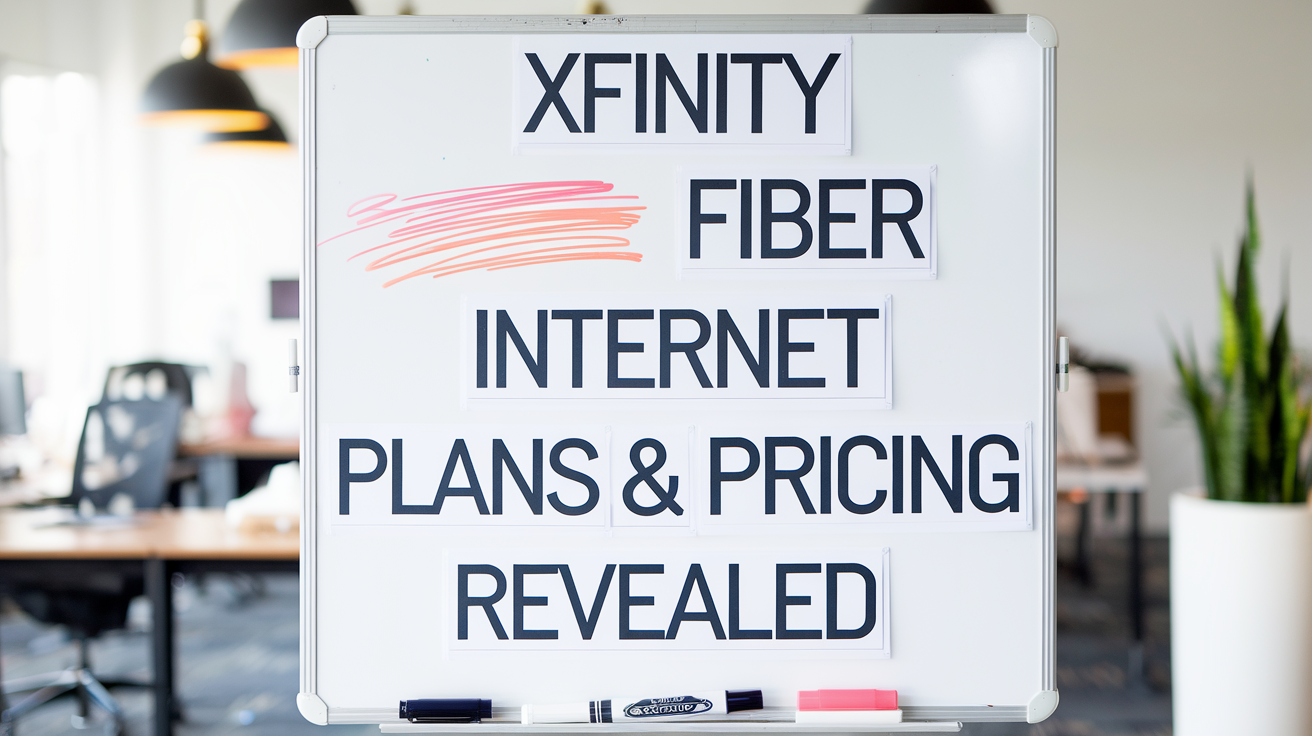Easy Ways to Connect to Xfinity Hotspot

Unlock seamless connectivity on the go with our guide to easy Xfinity Wi-Fi hotspot access. Discover straightforward methods to connect your devices, bypass common hurdles, and maximize your mobile internet experience, ensuring you're always online without the hassle.
What Are Xfinity Hotspots?
Xfinity Hotspots represent a vast network of public Wi-Fi access points deployed by Comcast, the parent company of Xfinity. These hotspots are strategically located in high-traffic areas such as parks, downtown districts, sports stadiums, transit hubs, and even inside businesses like coffee shops and retail stores. The primary goal of this extensive network is to provide Xfinity internet subscribers with reliable and convenient internet access when they are away from their home Wi-Fi. This service allows users to save on their mobile data usage and stay connected wherever they go, transforming public spaces into potential internet access points. By leveraging the power of community Wi-Fi, Xfinity aims to extend internet coverage beyond the confines of individual homes, offering a tangible benefit to its customer base and enhancing overall digital accessibility in urban and suburban environments across the United States. The network is designed to be robust and scalable, continuously expanding to cover more locations and serve more users, making it an integral part of the Xfinity ecosystem.
Who Can Access Xfinity Hotspots?
Access to Xfinity Hotspots is primarily a benefit for existing Xfinity internet subscribers. If you subscribe to an eligible Xfinity Internet plan, you automatically gain access to millions of these Wi-Fi hotspots nationwide. This includes customers with Performance Starter, Performance, Blast!, Extreme, and Ultimate tiers of service. For those who do not have an Xfinity Internet subscription, access is generally limited. However, Xfinity sometimes offers limited trial periods or promotional access to non-subscribers, though this is not a standard offering. It's crucial for users to verify their eligibility through their Xfinity account or by contacting customer service. The system typically authenticates users based on their Xfinity account credentials or MAC address of their device, ensuring that only authorized users can connect. This model incentivizes subscription to Xfinity's home internet services by providing a valuable, widespread public Wi-Fi network as an added perk, thereby increasing the perceived value of their home internet packages. As of 2025, Comcast continues to emphasize this subscriber-centric access model, with no widespread public access without an Xfinity account being the norm.
Benefits of Using Xfinity Hotspots
The advantages of utilizing Xfinity Hotspots are numerous and directly address the modern need for constant connectivity. Firstly, and perhaps most significantly, is the substantial data savings. By connecting to an Xfinity Hotspot, users can offload their internet traffic from their cellular data plan. This is particularly beneficial for individuals with limited data allowances or those who frequently stream videos, download large files, or engage in video conferencing while on the move. In 2025, with the increasing reliance on data-intensive applications, this can translate into significant monthly savings, preventing overage charges and the need to upgrade mobile data plans. Secondly, Xfinity Hotspots offer enhanced convenience and accessibility. The sheer scale of the network means that finding a hotspot is often possible in many urban and suburban areas, from coffee shops and libraries to public parks and shopping centers. This ensures that users can remain productive or entertained even when away from home or office Wi-Fi. Thirdly, these hotspots provide a more stable and often faster internet connection compared to cellular data, especially in areas with weak cellular signals. This improved performance is crucial for tasks requiring a consistent connection, such as online gaming, live streaming, or participating in virtual meetings. Furthermore, Xfinity Hotspots offer a reliable backup connection. If your home internet goes down temporarily, you might be able to connect to a nearby hotspot to maintain essential online activities. Lastly, for Xfinity subscribers, it's a value-added service that comes at no extra cost, increasing the overall value proposition of their Xfinity internet subscription. The network's continuous expansion in 2025 further solidifies these benefits, making it an increasingly indispensable tool for connected individuals.
Connecting to Xfinity Hotspots: Step-by-Step Guides
Connecting to an Xfinity Hotspot is designed to be a straightforward process, whether you're using a smartphone, tablet, laptop, or another Wi-Fi-enabled device. The key is to identify the correct network name (SSID) and then authenticate your device. The most common SSID for Xfinity hotspots is "xfinitywifi". Some locations might use a branded SSID, but "xfinitywifi" is the universal identifier for the public network. Authentication typically involves using your Xfinity account credentials or, for first-time users, a simple registration process. Below are detailed steps for various devices.
Connecting on Smartphones and Tablets (iOS & Android)
Mobile devices are perhaps the most common way people access public Wi-Fi, and connecting to Xfinity Hotspots on these devices is quick and intuitive.
For iOS Devices (iPhone/iPad):
- Enable Wi-Fi: Navigate to your device's 'Settings' app. Tap on 'Wi-Fi' and ensure the toggle switch is turned ON.
- Scan for Networks: Your device will automatically scan for available Wi-Fi networks. Look for 'xfinitywifi' in the list of networks.
- Select the Network: Tap on 'xfinitywifi' to initiate the connection.
- Authenticate: A login page or portal should automatically appear. If it doesn't, tap the 'i' icon next to 'xfinitywifi' and then tap 'Join Wi-Fi Network' or a similar option. This should prompt the login page.
- Enter Credentials: On the Xfinity login page, enter your Xfinity username and password. If you are a first-time user or have forgotten your credentials, you may need to visit the Xfinity website to set them up or reset them.
- Accept Terms: You may be prompted to accept terms and conditions. Review them and proceed.
- Connected: Once authenticated, you should see a checkmark next to 'xfinitywifi' and the Wi-Fi symbol in your device's status bar. Your device is now connected.
For Android Devices:
- Enable Wi-Fi: Open the 'Settings' app on your Android device. Tap on 'Connections' or 'Network & Internet', then select 'Wi-Fi'. Ensure the Wi-Fi toggle is switched ON.
- Scan for Networks: Your device will list available Wi-Fi networks. Find and tap on 'xfinitywifi'.
- Authenticate: A notification or a pop-up window will usually appear, indicating that you need to sign in to the network. Tap on this notification or the prompt to open the Xfinity login page. If no prompt appears, try opening a web browser and navigating to any website; you should be redirected to the login portal.
- Enter Credentials: On the Xfinity login page, enter your Xfinity username and password. If you don't have these, you'll need to obtain them from your Xfinity account.
- Accept Terms: Agree to any terms and conditions presented.
- Connected: Once successfully authenticated, your device will show as connected to 'xfinitywifi', and the Wi-Fi icon will appear in the status bar.
Connecting on Laptops and PCs (Windows & macOS)
Laptops and desktop computers can also easily connect to Xfinity Hotspots, allowing for more productive work sessions or browsing on the go.
For Windows Devices:
- Access Wi-Fi Settings: Click on the Wi-Fi icon in the system tray (usually located in the bottom-right corner of the screen).
- Scan for Networks: A list of available Wi-Fi networks will appear. Look for 'xfinitywifi'.
- Connect: Click on 'xfinitywifi' and then click the 'Connect' button.
- Authenticate: A login page should open in your default web browser. If it doesn't, try opening a browser and visiting a website like google.com.
- Enter Credentials: On the Xfinity login portal, enter your Xfinity username and password.
- Accept Terms: Click through any prompts to accept the terms of service.
- Connected: Once authenticated, your computer will be connected to the Xfinity Hotspot.
For macOS Devices:
- Access Wi-Fi Menu: Click on the Wi-Fi icon in the menu bar (usually in the top-right corner of the screen).
- Scan for Networks: A dropdown menu will show available networks. Select 'xfinitywifi'.
- Connect: Click 'Connect'.
- Authenticate: Your default web browser should open to the Xfinity login page. If not, open Safari and try to navigate to a website.
- Enter Credentials: Enter your Xfinity username and password on the login portal.
- Accept Terms: Agree to the terms and conditions.
- Connected: Your Mac will now be connected to the Xfinity Hotspot.
Connecting Other Wi-Fi-Enabled Devices
Many other devices, such as smartwatches, e-readers, and gaming consoles, can connect to Wi-Fi. The process is generally similar to connecting a smartphone or laptop.
- Access Network Settings: Locate the Wi-Fi or Network settings on your device.
- Scan for Networks: Search for available Wi-Fi networks and select 'xfinitywifi'.
- Authenticate: When prompted for authentication, you may need to use a companion app on your smartphone or computer to log in with your Xfinity credentials. Some devices might be able to open a browser window to complete the login.
- Use Xfinity WiFi Hotspots App (Optional but Recommended): For a more streamlined experience, especially for devices that don't easily open browser windows for login, consider downloading the Xfinity WiFi Hotspots app. This app can help manage connections and sometimes automate the login process for your devices.
Troubleshooting Common Connection Issues
While connecting to Xfinity Hotspots is usually seamless, occasional issues can arise. Here are some common problems and their solutions:
- Cannot Find 'xfinitywifi' Network:
- Check Signal Strength: You might be too far from the hotspot. Try moving closer to the presumed location of the hotspot.
- Device Wi-Fi Off: Ensure Wi-Fi is enabled on your device.
- Restart Device: A simple restart can often resolve temporary glitches.
- Check Xfinity Outage Map: Although rare for hotspots, check the Xfinity status center for any reported outages in your area.
- Login Page Not Appearing:
- Clear Browser Cache/Cookies: Sometimes, old data can interfere with the login portal.
- Try a Different Browser: If using a laptop or tablet, try opening the login page in an alternative web browser.
- Manually Open Login Page: Open a web browser and type in a common URL like `xfinity.com` or `google.com`. This often forces the redirection to the captive portal.
- Check for Captive Portal Blockers: Ensure no browser extensions or security software are blocking captive portals.
- Authentication Failed:
- Verify Credentials: Double-check your Xfinity username and password for typos. Ensure Caps Lock is off.
- Reset Password: If unsure, reset your Xfinity password via the Xfinity website.
- Check Account Status: Ensure your Xfinity account is active and in good standing.
- Too Many Devices: Some accounts might have a limit on the number of devices simultaneously connected to hotspots. Log out from unused devices.
- Connected but No Internet Access:
- Reboot Device: Disconnect from the hotspot, restart your device, and reconnect.
- Forget Network and Reconnect: On your device's Wi-Fi settings, select 'xfinitywifi', then choose 'Forget This Network' (or similar option) and reconnect from scratch.
- Check Hotspot Status: The specific hotspot might be experiencing technical difficulties. Try finding another Xfinity Hotspot nearby.
- Slow Speeds:
- Too Many Users: Public hotspots can become congested during peak hours. Try connecting during off-peak times if possible.
- Distance from Access Point: Move closer to the hotspot's router.
- Device Limitations: Older devices might not support the Wi-Fi standards used by the hotspot, leading to slower speeds.
If problems persist, contacting Xfinity customer support is always a reliable option. They can provide specific guidance based on your account and the hotspot network status.
Maximizing Your Xfinity Hotspot Experience
To get the most out of Xfinity Hotspots, consider these tips:
- Download the Xfinity WiFi Hotspots App: This app (available for iOS and Android) is invaluable. It can help you locate nearby hotspots, manage your connected devices, and sometimes even automate the login process, saving you the hassle of repeatedly entering credentials. As of 2025, the app continues to be updated with new features for improved user experience.
- Save Network Settings: Once connected, ensure your device is set to automatically connect to 'xfinitywifi' when in range. This saves time and ensures you don't miss out on connectivity.
- Understand Data Limits (if any): While Xfinity hotspots offer unlimited access for subscribers, be aware that specific hotspot locations might have their own usage policies or speed throttling after a certain threshold, though this is uncommon for the primary "xfinitywifi" network.
- Use During Off-Peak Hours: If you require faster speeds for demanding tasks, try connecting during times when fewer people are likely to be using the hotspot, such as early mornings or late at night.
- Keep Your Device's Software Updated: Ensure your smartphone, tablet, or laptop has the latest operating system and security updates. This can improve Wi-Fi performance and security.
- Utilize Hotspots for Data-Heavy Tasks: Make it a habit to connect to an Xfinity Hotspot whenever possible for activities that consume a lot of mobile data, like downloading large files, streaming high-definition video, or participating in video calls.
- Be Mindful of Location: Some hotspots are located in areas with higher foot traffic, which might mean more potential for interference or congestion. If one location is slow, try another nearby.
By proactively managing your connections and utilizing the available tools, you can transform public spaces into productive extensions of your home internet.
Xfinity Hotspot vs. Other Wi-Fi Options
Xfinity Hotspots offer a distinct advantage for Xfinity subscribers compared to other public Wi-Fi solutions. Here's a breakdown:
| Feature | Xfinity Hotspots | Free Public Wi-Fi (e.g., Cafes, Airports) | Mobile Hotspot (Tethering) |
|---|---|---|---|
| Cost for Xfinity Subscribers | Included with eligible subscription | Free (often with ads or time limits) | Uses mobile data allowance (can incur extra charges) |
| Network Size & Availability | Extensive nationwide network | Varies greatly by location; often limited to specific businesses | Limited by cellular signal strength and device battery |
| Speed & Reliability | Generally good, often better than cellular; can vary with user load | Highly variable; can be slow, unreliable, or congested | Dependent on cellular signal; can be fast but limited by data caps |
| Security | Encrypted connection (WPA2/WPA3) when authenticated; users advised to use VPN for sensitive tasks | Often unencrypted or weakly encrypted; higher security risks | Generally secure as it's a direct connection from your device, but depends on cellular network security |
| Ease of Connection | Requires Xfinity credentials; can be automated with app | Usually simple connection, but often requires portal login with ads | Easy to set up on compatible devices |
| Data Usage | Does not count against mobile data plan | Does not count against mobile data plan | Counts against mobile data plan |
The primary differentiator for Xfinity subscribers is the included, extensive network that doesn't consume mobile data. While free public Wi-Fi is accessible, its reliability and security are often questionable. Mobile hotspots offer convenience but at the cost of your cellular data allowance. Therefore, for Xfinity customers, leveraging their own network of hotspots is often the most cost-effective and reliable solution for staying connected outside their home.
Security Considerations for Public Wi-Fi
While Xfinity Hotspots offer convenience, connecting to any public Wi-Fi network, including Xfinity's, carries inherent security risks. It's crucial to adopt safe practices to protect your personal information. Here are key considerations:
- Use a Virtual Private Network (VPN): This is the single most effective way to secure your connection. A VPN encrypts all your internet traffic, making it unreadable to anyone who might be trying to intercept it. Even if the Wi-Fi network itself is compromised, your data remains protected. Many reputable VPN services are available, some even offering free tiers for basic use.
- Avoid Sensitive Transactions: Refrain from accessing sensitive accounts, such as online banking, making online purchases with credit card details, or logging into critical work systems while connected to public Wi-Fi, unless you are using a VPN.
- Ensure Websites Use HTTPS: Look for the padlock icon and "https://" in the browser's address bar. This indicates that the connection to the website is encrypted. While this encrypts traffic between your browser and the website, it doesn't encrypt your entire internet connection like a VPN does.
- Disable File Sharing: On your device's network settings, ensure that file and printer sharing is turned OFF. This prevents your device from being discoverable by others on the same network.
- Keep Software Updated: Regularly update your operating system, web browser, and antivirus software. Updates often include security patches that protect against newly discovered vulnerabilities.
- Use Strong, Unique Passwords: While not directly related to hotspot security, using strong, unique passwords for all your online accounts is a fundamental security practice. Consider using a password manager.
- Be Wary of Fake Hotspots: While less common with established networks like Xfinity's, be cautious of networks with similar names that might be set up to trick users (e.g., "Xfinity_Free_WiFi" instead of "xfinitywifi"). Always connect to the official, authenticated network.
- Log Out When Finished: If you have to log into a portal, make sure to log out properly when you are done, especially if you are using a shared device.
By being vigilant and implementing these security measures, you can significantly reduce the risks associated with using public Wi-Fi and enjoy the convenience of Xfinity Hotspots with greater peace of mind.
The Future of Xfinity Hotspots and Connectivity
The landscape of internet connectivity is constantly evolving, and Xfinity Hotspots are positioned to adapt and grow. As of 2025, Comcast continues to invest in expanding its Wi-Fi network, aiming to provide even broader coverage and improved performance. Several trends are shaping the future of public Wi-Fi and Xfinity's role within it:
- Increased Density and Speed: Expect more hotspots to be deployed in underserved areas and existing ones to be upgraded with faster Wi-Fi standards (like Wi-Fi 6E and beyond) to handle the growing demand for bandwidth. This will ensure smoother streaming, faster downloads, and better performance for all connected devices.
- Enhanced Security Features: As cyber threats evolve, so too will the security protocols for public Wi-Fi. Future iterations of Xfinity Hotspots may incorporate more advanced encryption methods and potentially integrate with device-level security features to offer a more robustly protected user experience.
- Integration with 5G and IoT: With the proliferation of 5G mobile networks and the Internet of Things (IoT), public Wi-Fi solutions like Xfinity Hotspots will likely play a complementary role. They could serve as a crucial offload mechanism for mobile data, especially in dense urban areas where cellular capacity can be strained. Furthermore, they might become integral to managing the connectivity needs of a growing number of smart devices.
- Smarter Network Management: Advanced analytics and AI will likely be used to manage network traffic more effectively, predict congestion, and optimize performance in real-time. This could lead to a more consistent and reliable user experience, even during peak usage times.
- Partnerships and Expansion: Comcast may explore further partnerships with businesses, municipalities, and other service providers to expand the reach and utility of the Xfinity Hotspot network, potentially integrating it into smart city initiatives or public transportation systems.
- Seamless Roaming: Efforts will continue to make the transition between home Wi-Fi, cellular data, and Xfinity Hotspots as seamless as possible. Technologies that allow for automatic authentication and network switching will become more sophisticated, reducing manual intervention for users.
The ongoing commitment to expanding and improving the Xfinity Hotspot network underscores its importance as a key component of Comcast's connectivity strategy. For Xfinity subscribers, this means continued access to a valuable, cost-saving, and increasingly powerful Wi-Fi solution that complements their home internet service and keeps them connected wherever life takes them.
In conclusion, connecting to Xfinity Hotspots is an accessible and beneficial feature for all eligible Xfinity internet subscribers. By following the straightforward step-by-step guides for your specific device, you can easily tap into this expansive network. Remember to leverage the Xfinity WiFi Hotspots app for locating and managing your connections, and always prioritize security by using a VPN, especially when handling sensitive information. The widespread availability and data-saving capabilities of Xfinity Hotspots make them an indispensable tool for staying connected on the go in today's digital world. Embrace these easy ways to connect and enjoy uninterrupted internet access.





